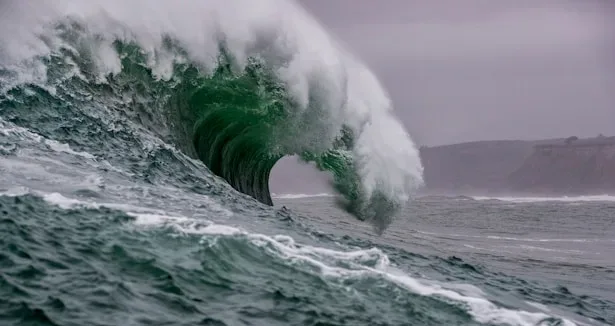8.8 quake near Russia triggers tsunami warnings from Japan to California; Hawaii in path of waves
A powerful 8.8-magnitude earthquake has struck off Russia’s Kamchatka Peninsula, unleashing a widespread tsunami alert across the Pacific. Towering waves up to four metres high have already crashed into Russian coastal towns, and authorities across Japan, Hawaii, California, and as far as Ecuador are scrambling to respond.
The quake, which hit early Wednesday, was shallow and violent — the exact combination that raises tsunami risk. Footage from Russia’s Far East shows waves sweeping through port towns and smashing into buildings, with a kindergarten reported damaged and debris scattered across streets. Despite the dramatic impact, Russian officials said there were no major injuries, though several people sustained minor wounds while fleeing buildings.
Emergency sirens wailed in Japan as authorities issued evacuation orders along the country’s eastern coastline. Trains were halted, coastal highways were closed, and workers at the Fukushima Daiichi nuclear plant were temporarily evacuated as a precaution. Initial wave readings in Hokkaido were moderate, but experts warned the danger remained as tsunami waves often arrive in successive surges.
Hawaii was placed under a full tsunami warning, with the first waves expected to hit Oahu and surrounding islands shortly after nightfall. Governor Josh Green issued an emergency proclamation, urging residents to flee low-lying areas immediately. A wave measuring nearly one metre was already recorded near Midway Atoll — signalling more turbulence ahead for the islands.
Along the U.S. mainland, alerts were issued for the entire West Coast. California’s far north was under a tsunami warning, while advisory-level alerts blanketed Oregon, Washington, and Alaska. Authorities urged beachgoers and harbour users to stay far inland, warning that even relatively small waves could carry deadly force. Ports in Los Angeles, San Francisco, and Seattle all activated emergency protocols.
Further south, governments in Peru and Ecuador issued alerts and began evacuations in vulnerable areas, including the Galápagos Islands. Mexico also activated its national tsunami alert system, warning coastal populations to stay away from the shore.
Tsunamis are triggered when a sudden shift in the seabed, such as an undersea earthquake, forces massive amounts of water upward. These waves then race across the ocean at jet-like speeds before rising and slowing near coastlines. Experts noted that this quake had all the characteristics of a classic tsunami-generating event — and warned that further aftershocks, potentially of magnitude 7.5 or higher, were possible.
For now, waves are expected to roll in over several hours. Tsunami experts stressed that the first wave is not always the biggest, and urged residents not to return to the shore until authorities give the all-clear. In previous disasters, such as the 2004 Indian Ocean tsunami and the 2011 disaster in Japan, it was later waves that proved most deadly.
Airlines rerouted flights away from affected airspace, and shipping lanes across the Pacific were placed on alert. Meanwhile, authorities across the region scrambled to coordinate their responses and prevent panic. In some areas, coastal sirens sounded for the first time in years.
Experts warned this could be the first in a wave of such events, as seismic stress in the Pacific “Ring of Fire” continues to build. As one emergency coordinator put it: “This was the big one for Russia — but we’re not in the clear yet.”
